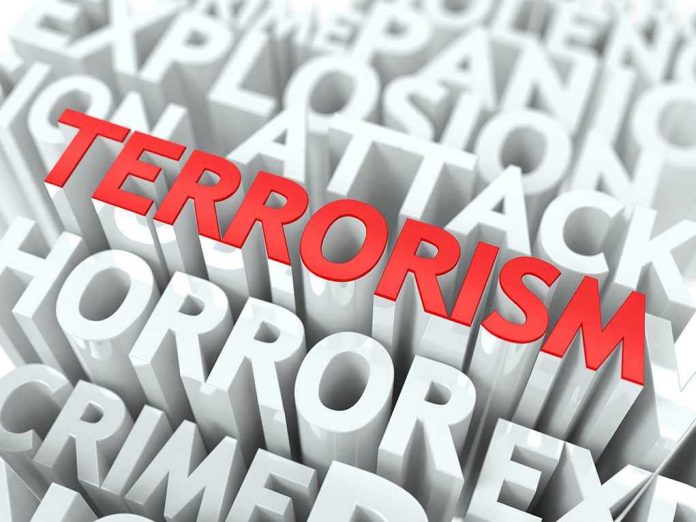
Twelve ordinary lives ended in a split second near Delhi’s iconic Red Fort, and the mystery behind the blast grips a nation that’s no stranger to tragedy but still demands answers.
Story Snapshot
- A deadly car explosion near Delhi’s Red Fort leaves twelve dead and the city on edge.
- India’s government labels the event a “terrorist incident” and vows a thorough response.
- The blast exposes lingering vulnerabilities in Delhi’s security apparatus.
- Public fear and speculation escalate as investigators search for answers.
Delhi’s Red Fort: A Symbol Shaken by Terror
Delhi’s Red Fort stands as a monument to centuries of resilience, and yet, this week, its shadow bore witness to violence that shattered routine and hearts alike. On Tuesday, a busy morning quickly turned chaotic when a car exploded just blocks from the historic landmark, killing at least twelve and injuring many more. The location is no coincidence; Red Fort has long represented India’s sovereignty, making it an alluring target for those intent on sending a message. The blast’s timing—amid heightened security and public gatherings—raises hard questions about whether authorities did enough to anticipate and prevent such attacks.
Eyewitnesses described scenes of panic as sirens pierced the air, smoke billowed, and police scrambled to cordon the area. Families searching for loved ones found only grief and confusion. The attack’s proximity to a national landmark magnifies the sense of vulnerability, as millions realize that even the most iconic sites are not immune to violent disruption. As details trickle in, the city’s daily rhythm slows, replaced by unease and a demand for answers.
Official Response: Defining Terror and Demanding Justice
India’s government wasted no time in branding the explosion a “terrorist incident,” a phrase that carries immense weight and consequence. Home Ministry officials stated unequivocally that “the country has witnessed a heinous terror incident, perpetrated by anti-national elements.” This categorization triggers an accelerated investigation, mobilizes national intelligence agencies, and signals to the public—and potential perpetrators—that the state will not tolerate such acts. Critics, however, question whether the speed of this declaration reflects genuine intelligence or political pressure to reassure a frightened populace.
Security forces have launched sweeping raids across Delhi, detaining suspects and scouring surveillance footage for leads. The blast’s sophistication suggests planning and resources beyond common criminal activity. For many, the specter of terrorism in the capital is a reminder of past tragedies, fueling both resilience and fatigue. Calls for unity ring out, but so do demands for accountability, as citizens ask why such attacks continue to penetrate the city’s defenses.
Investigative Challenges and Public Speculation
Investigators face a daunting task: reconstructing the timeline, identifying perpetrators, and understanding motives. Early reports indicate that the car was rigged with explosives and parked in a densely populated area, maximizing casualties. Forensic teams comb through debris, searching for clues that might reveal the source of the explosives and connections to known extremist groups. The lack of immediate claims of responsibility further complicates efforts, deepening public anxiety and speculation.
The blast exposes persistent gaps in Delhi’s security infrastructure, from surveillance blind spots to insufficient coordination among agencies. As news outlets churn out updates and social media amplifies rumors, the line between fact and conjecture blurs. Some commentators argue that India’s counter-terror strategy requires a fundamental overhaul, emphasizing intelligence sharing and community engagement over reactive policing. Others warn against politicizing the tragedy, insisting that justice for victims should remain paramount.
The Human Cost and the Road Ahead
Beyond numbers and headlines, the true cost of the Red Fort blast lies in the shattered lives of families who lost loved ones and survivors whose scars will linger. Vigils and memorials multiply across Delhi, offering moments of shared grief and resolve. The government pledges compensation and support, but many wonder if that will be enough to restore trust and security in a city that feels newly fragile.
As investigators pursue leads and officials promise reforms, the city—and the nation—faces an uncomfortable truth: terrorism’s threat is not confined to borders or predictable patterns. The Red Fort blast may fade from headlines, but its impact will haunt Delhi’s streets and India’s consciousness for years to come. Whether the lessons learned will translate into lasting change remains an open question—one that demands not just answers, but action.
Sources:
Indian government calls deadly car explosion a terror attack by ‘anti-national forces’












